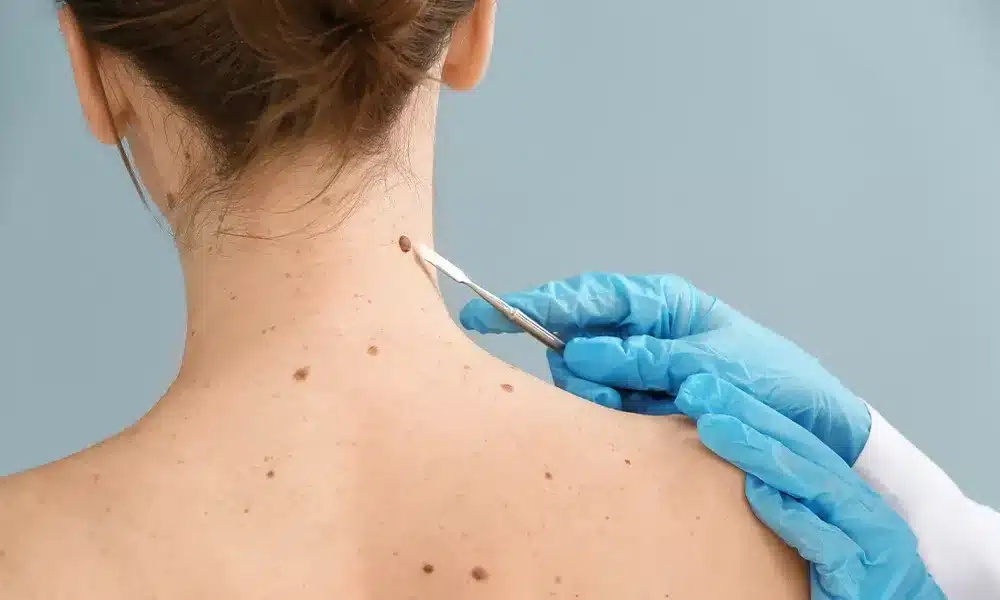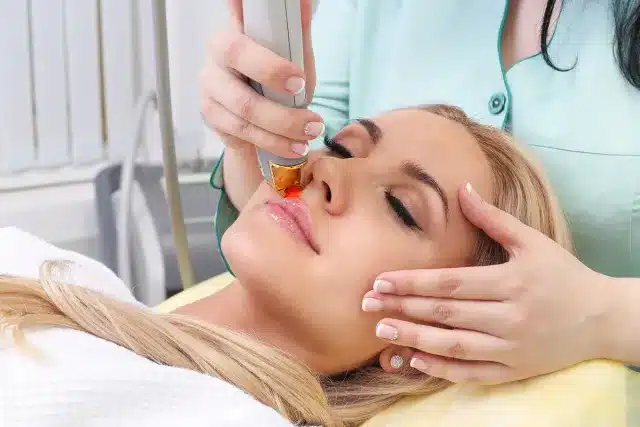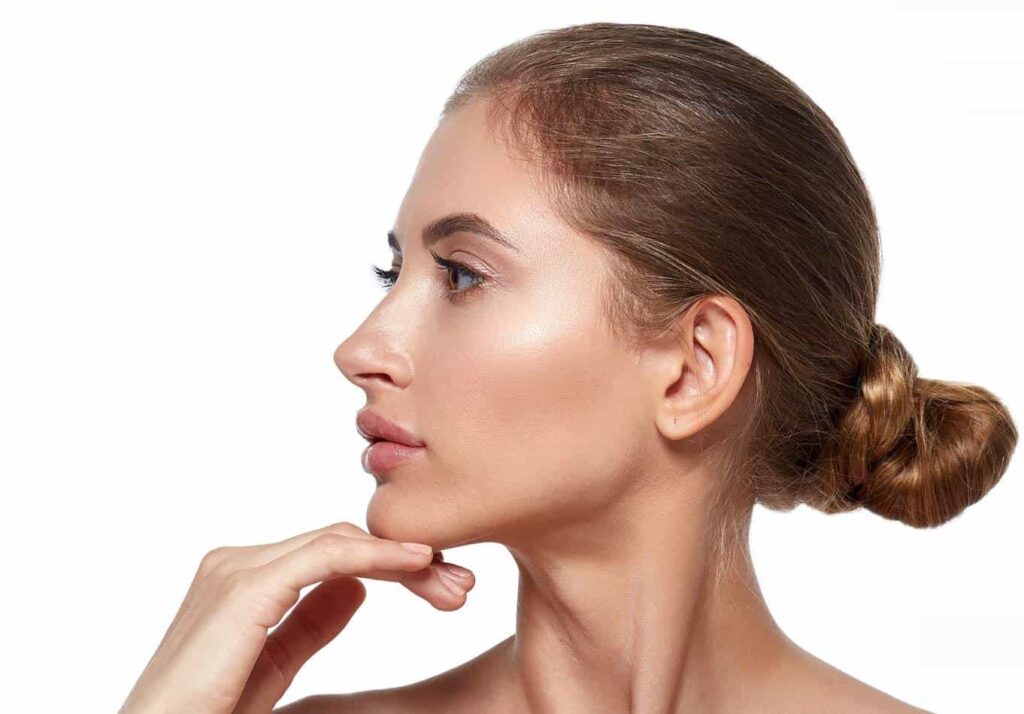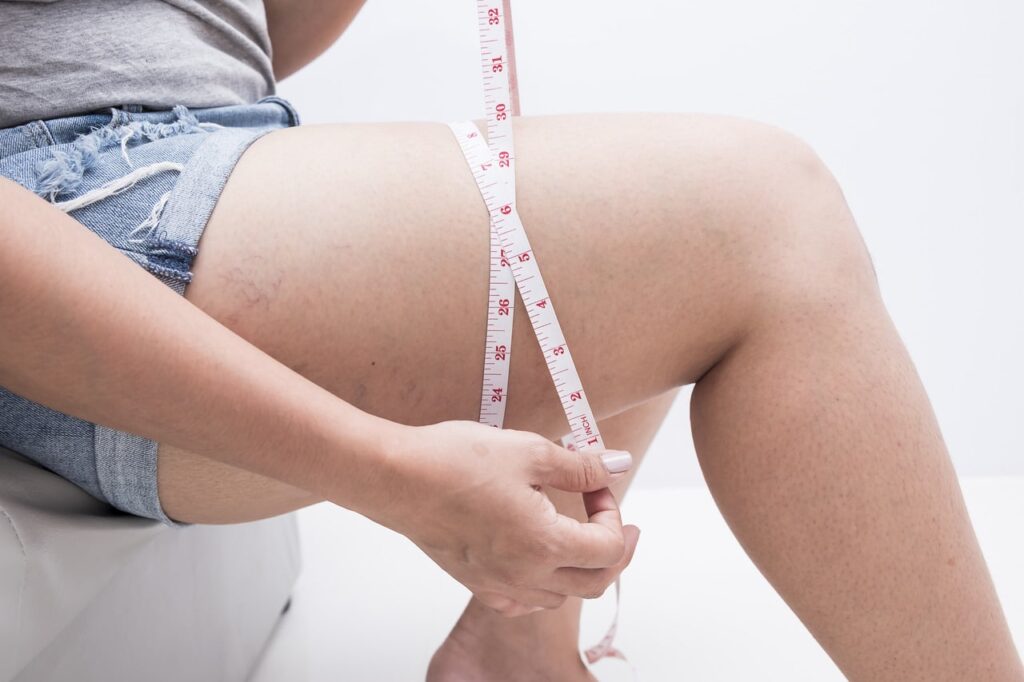Understanding Hyperpigmentation
Causes
Hyperpigmentation happens when the skin produces too much melanin. Melanin gives skin its color. Sun exposure is a major cause. UV rays trigger melanin production, leading to dark spots.
Hormonal changes also contribute. Pregnancy, birth control pills, and menopause can cause melasma. This condition results in discoloration, brown or gray patches, dark spots, acne hyperpigmentation, and dermal pigmentation on the face.
Certain medications can lead to hyperpigmentation. Drugs like antibiotics and chemotherapy agents sometimes cause pigmentation and dark spots as side effects.
Types
There are several types of hyperpigmentation:
- Melasma: Often occurs during pregnancy. It appears as large patches on the face.
- Sunspots: Also known as solar lentigines. These are small, darkened areas caused by sun damage.
- Post-inflammatory hyperpigmentation (PIH): Develops after an injury or inflammation, often resulting in a dark spot that may require treatment such as a light chemical peel. Common after acne or eczema.
Treatment Options
Several treatments help reduce hyperpigmentation. Chemical peels are effective. They remove the top layer of skin with a light chemical peel treatment, promoting new skin growth and reducing pigmentation spots.
Laser therapy is another option. It targets pigmentation in the deeper layers of the skin as a treatment similar to a chemical peel. Microdermabrasion also works by exfoliating the skin’s surface.
Topical treatments include hydroquinone and retinoids. These creams lighten dark spots over time.
Chemical Peels
Chemical peels use acids to exfoliate the skin. Glycolic acid is popular for treating hyperpigmentation. It penetrates deeply and removes dead skin cells.
Salicylic acid is another option. It’s effective for oily and acne-prone skin. Lactic acid works well for sensitive skin types.
Peels come in different strengths:
- Superficial peels: Mild and require little downtime.
- Medium peels: Penetrate deeper, address pigmentation, and may need a few days to heal after treatment.
- Deep peels: Very strong and require significant recovery time.
Real-Life Examples
People with hyperpigmentation often feel self-conscious. A woman named Maria struggled with melasma for years. She tried many treatments without success.
Maria finally opted for a series of chemical peels. Over a few months, her dark patches faded significantly. She felt more confident and happy with her appearance.
Another example is John, who had sunspots and pigmentation from years of outdoor work and considered a chemical peel. He chose laser therapy combined with chemical peels. His skin tone evened out, and he noticed fewer dark spots after the chemical peel improved his pigment.
Types of Chemical Peels
Superficial Peels
Superficial peels are the mildest type. They treat the outermost layer of skin. These peels use alpha-hydroxy acids (AHAs) like glycolic acid to target pigment. They are often called “lunchtime peels” because they require little downtime.
Medium Peels
Medium peels penetrate deeper into the skin. They use trichloroacetic acid (TCA). This type is effective for treating moderate hyperpigmentation. Patients may experience redness and peeling for a week.
Deep Peels
Deep peels are the most intense. They use phenol for a chemical peel to reach the deeper layers of skin. These peels can treat severe hyperpigmentation. Recovery time is longer, often taking several weeks.
Enzyme Peels
Enzyme peels are gentler than chemical peels. They use natural enzymes from fruits like papaya or pineapple for a chemical peel. These peels exfoliate without harsh chemicals. They are suitable for sensitive skin types.
Retinol Peels
Retinol peels use vitamin A derivatives. These help in cell turnover and collagen production. Retinol peels are good for treating fine lines and pigmentation issues.
Jessner’s Peel
Jessner’s peel is a combination peel. It uses salicylic acid, lactic acid, and resorcinol. This peel treats sun damage and uneven skin tone effectively.
TCA Cross Technique
The TCA Cross technique targets specific areas. It uses high concentration TCA on scars or spots. This method is precise and minimizes damage to surrounding skin, unlike a chemical peel.
Glycolic Acid Peel Benefits
Exfoliation Power
Glycolic acid peels are known for their strong exfoliation. They remove dead skin cells effectively. This process helps reveal new, fresh skin underneath. The exfoliating action also unclogs pores.
Collagen Production
These peels boost collagen production. Collagen is vital for firm and youthful skin. Increased collagen reduces fine lines and wrinkles. This makes the skin look smoother and more elastic.
Hyperpigmentation Reduction
Glycolic acid peels target hyperpigmentation. They help fade dark spots and uneven skin tone. This is especially beneficial for those with sun damage or acne scars, particularly when used in conjunction with a chemical peel. Over time, the skin becomes more even-toned.
Acne Treatment
Glycolic acid peels also help with acne. They clear out clogged pores and reduce oiliness. This can prevent future breakouts. Existing acne scars can also become less visible.
Improved Skin Texture
Regular use of glycolic acid peels improves skin texture. The skin feels softer and smoother. Rough patches and dry areas diminish. This results in a more refined appearance.
Quick Recovery Time
One advantage is the quick recovery time. Unlike deeper peels, glycolic acid peels have minimal downtime. Redness and irritation usually subside within a few days. This makes them convenient for busy individuals.
Suitable for Various Skin Types
Glycolic acid peels suit many skin types. They are effective for both oily and dry skin. However, people with sensitive skin should proceed cautiously. It’s best to consult a dermatologist first.
Salicylic Acid Peel Uses
Treating Acne
Salicylic acid peels are effective for treating acne. They penetrate the skin deeply. This helps unclog pores and reduce inflammation. The peels also remove dead skin cells, which can prevent future breakouts.
Reducing Oiliness
Salicylic acid is oil-soluble. It can penetrate oily skin better than water-based acids in a chemical peel. This makes it ideal for reducing oiliness on the face after a chemical peel. By controlling excess oil, it helps prevent acne and keeps the skin looking fresh.
Exfoliating Skin
Salicylic acid acts as an exfoliant. It removes the outer layer of dead skin cells. This promotes new cell growth and improves skin texture. Regular use can make the skin smoother and more radiant.
Minimizing Pores
Large pores can be a cosmetic concern for many people. Salicylic acid peels help in minimizing pore size. They clean out the pores and tighten the skin around them. This makes the pores appear smaller over time.
Fading Hyperpigmentation
Salicylic acid peels are useful for fading hyperpigmentation. They lighten dark spots and even out skin tone. Consistent use over several weeks shows noticeable improvements.
Preventing Fine Lines
While not as strong as glycolic acid, salicylic acid can help with fine lines. It stimulates collagen production, which keeps the skin firm and elastic. Over time, this reduces the appearance of fine lines.
Managing Rosacea
People with rosacea often have sensitive skin. Salicylic acid peels can help manage this condition without causing irritation. They reduce redness and inflammation associated with rosacea.
Enhancing Product Absorption
Using a salicylic acid peel enhances product absorption. After peeling, the skin is more receptive to other skincare products. This maximizes their effectiveness.
TCA Peel for Skin Tone
What is TCA
TCA stands for trichloroacetic acid. It’s a chemical that dermatologists use for peels. It helps treat hyperpigmentation.
How TCA Works
TCA removes the outer layer of skin. This process reveals new skin underneath. The peel can be light, medium, or deep. The depth depends on how much TCA is used.
Application Process
A dermatologist applies the TCA solution to the skin. The solution stays on for a few minutes. Then, it is neutralized and washed off. Patients might feel a burning sensation during this time.
Recovery Time
Recovery varies by peel depth. Light peels heal in about a week. Medium peels take one to two weeks. Deep peels may need several weeks to heal completely.
Benefits of TCA Peels
TCA peels offer many benefits:
- They reduce dark spots.
- They even out skin tone.
- They improve skin texture.
Side Effects
Possible side effects include redness and swelling. Some people experience peeling and crusting. These effects usually fade within a few days to weeks.
Real-Life Example
Jane, a 35-year-old woman, had severe hyperpigmentation on her cheeks. She tried many treatments without success. Her dermatologist recommended a medium-depth TCA peel. After two weeks of recovery, Jane’s skin looked much clearer and more even.
Lactic Acid for Renewal
Benefits
Lactic acid is a popular choice for treating hyperpigmentation. It is derived from milk and is an alpha hydroxy acid (AHA). This means it can exfoliate the skin effectively.
This acid helps remove dead skin cells. By doing so, it reveals fresher, more even-toned skin underneath. It also improves skin texture and reduces fine lines.
Application
Lactic acid peels are easy to apply at home. They come in various concentrations, typically ranging from 10% to 30%. For beginners, starting with a lower concentration is safer.
Apply the peel on clean, dry skin. Leave it on for the recommended time, usually between 3 to 10 minutes. Then rinse off with cool water.
Frequency
Using lactic acid peels too frequently can irritate the skin. Start by using it once a week. Gradually increase the frequency based on your skin’s tolerance.
Overuse can lead to redness and peeling. It’s important to listen to your skin’s response and adjust accordingly.
Precautions
Lactic acid can make your skin more sensitive to the sun. Always use sunscreen after applying a peel. This prevents further hyperpigmentation and protects your renewed skin.
Avoid using other strong skincare products on the same day. This includes retinoids and other acids. Combining these can cause irritation.
Real-Life Example
Sarah had struggled with dark spots for years. She decided to try a lactic acid peel after reading about its benefits. After six weeks of weekly use, her skin appeared brighter and more even-toned.
She noticed fewer dark spots and an overall improvement in her complexion. Her experience highlights the effectiveness of lactic acid peels for hyperpigmentation.
Mandelic Acid Peel Advantages
Gentle Exfoliation
Mandelic acid peels offer gentle exfoliation. They work well for sensitive skin types. The large molecular size of mandelic acid penetrates the skin slowly. This reduces irritation and redness.
Effective for Hyperpigmentation
Mandelic acid peels are effective in treating hyperpigmentation. They break down melanin, the pigment responsible for dark spots. Regular use can lighten sunspots, age spots, and acne scars. Visible results often appear within a few weeks.
Anti-Aging Benefits
Mandelic acid also provides anti-aging benefits. It stimulates collagen production, which helps reduce fine lines and wrinkles. The skin becomes firmer and more youthful-looking over time.
Suitable for Acne-Prone Skin
People with acne-prone skin benefit from mandelic acid peels. They have antibacterial properties that help reduce acne-causing bacteria. This can lead to fewer breakouts and clearer skin.

Minimal Downtime
Mandelic acid peels require minimal downtime. Unlike stronger chemical peels, they don’t cause significant peeling or redness. Most people can resume their normal activities immediately after treatment.
Safe for All Skin Tones
Mandelic acid is safe for all skin tones. It carries a lower risk of post-inflammatory hyperpigmentation compared to other acids. This makes it a good option for darker skin tones.
Easy to Use at Home
Many mandelic acid peel products are available for home use. They come in various concentrations, making it easy to find one that suits your needs. Always follow the instructions carefully to avoid over-exfoliation.
Kojic Acid for Even Tone
What is Kojic Acid?
Kojic acid is a natural compound. It is derived from fungi. It is often used in skincare products. Kojic acid helps lighten skin.
How Kojic Acid Works
Kojic acid works by inhibiting melanin production. Melanin gives skin its color. By reducing melanin, kojic acid can help fade dark spots. This makes the skin look more even.
Benefits of Kojic Acid
There are several benefits to using kojic acid:
- Reduces dark spots: It helps lighten areas of hyperpigmentation.
- Evens skin tone: It creates a more uniform complexion.
- Antioxidant properties: Protects the skin from damage.
Usage and Application
Apply kojic acid products once or twice daily. Cleanse the skin first. Then apply a small amount of the product to the affected area. Follow with a moisturizer and sunscreen.
Possible Side Effects
Kojic acid can cause some side effects. These include redness, irritation, and itching. Always do a patch test before full application. If irritation occurs, discontinue use.
Combining with Other Treatments
Kojic acid can be combined with other treatments for better results. For example, use it with mandelic acid peels. This combination can enhance the overall effect on hyperpigmentation.
Vitamin C Peel Effects
Skin Brightening
Vitamin C peels help brighten the skin. They work by removing dead skin cells. This reveals a fresher layer of skin underneath. Vitamin C is known for its ability to reduce melanin production. Melanin causes dark spots and uneven skin tone.
Using a vitamin C peel can make your skin look more radiant. It can also improve overall texture. Many people notice a difference after just one treatment. Regular use can lead to even better results.
Collagen Production
Vitamin C stimulates collagen production. Collagen is a protein that keeps skin firm and youthful. As we age, collagen levels decrease. This leads to wrinkles and sagging skin.
A vitamin C peel boosts collagen levels. This helps reduce fine lines and improves skin elasticity. Over time, your skin may appear smoother and more toned.
Antioxidant Properties
Vitamin C is a powerful antioxidant. It protects the skin from damage caused by free radicals. Free radicals are unstable molecules that harm skin cells.
Antioxidants neutralize these harmful molecules. This reduces signs of aging and prevents further damage. A vitamin C peel provides these protective benefits directly to your skin.
Hyperpigmentation Reduction
Hyperpigmentation occurs when certain areas of the skin become darker than others. This can be due to sun exposure, acne scars, or hormonal changes.
Vitamin C peels are effective in treating hyperpigmentation. The peel lightens dark spots and evens out the skin tone. Consistent use can significantly reduce the appearance of hyperpigmentation.
Safe for Most Skin Types
Vitamin C peels are generally safe for most skin types. They are less likely to cause irritation compared to stronger chemical peels like glycolic acid or salicylic acid.
However, it’s important to do a patch test before full application. Some people may experience mild redness or tingling after using the peel.
Post-Peel Care
After using a vitamin C peel, proper care is essential. Your skin will be more sensitive to sunlight. Always apply sunscreen with at least SPF 30.
Moisturize regularly to keep your skin hydrated. Avoid using other strong skincare products for a few days after the peel.
Precautions and Aftercare
Patch Test
A patch test is essential before using a chemical peel. Apply a small amount of the peel on a hidden skin area. Wait for 24 hours to check for reactions. This helps prevent severe allergic responses.
Avoid Sun Exposure
Avoid direct sun exposure after a chemical peel. The skin becomes more sensitive to UV rays. Use broad-spectrum sunscreen with SPF 30 or higher. Wear protective clothing and hats when outside.
Moisturize Regularly
Keeping the skin hydrated is crucial after a peel. Use gentle, fragrance-free moisturizers. This helps in reducing peeling and dryness. Hydrated skin heals faster and looks healthier.
Avoid Harsh Products
Refrain from using harsh skincare products post-peel. Products with retinoids, exfoliants, or alcohol can irritate the skin. Stick to mild cleansers and soothing creams.
Monitor for Side Effects
Watch for any signs of infection or adverse reactions. Redness, swelling, or pus may indicate complications. Consult a dermatologist if these symptoms appear.
Follow Professional Advice
Always follow the advice of your dermatologist. They can provide personalized care instructions. This ensures optimal results and minimizes risks.
Final Remarks
Chemical peels offer a powerful solution for tackling hyperpigmentation. From glycolic acid to vitamin C, each peel brings unique benefits to rejuvenate your skin and even out your complexion. With the right peel, you can achieve brighter, smoother skin.
Ready to take the plunge? Consult with a dermatologist to find the best chemical peel for your skin type. Follow the recommended precautions and aftercare to maximize results. Start your journey to radiant skin today!
Frequently Asked Questions
What is hyperpigmentation?
Hyperpigmentation is the darkening of skin patches. It occurs due to excess melanin production. Common causes include sun exposure, inflammation, and hormonal changes.
How do chemical peels help with hyperpigmentation?
Chemical peels exfoliate the skin. They remove dead cells and promote new skin growth. This process reduces dark spots and evens skin tone.
Which chemical peel is best for sensitive skin?
Lactic acid peels are gentle. They are ideal for sensitive skin. They exfoliate without causing irritation.
Can I use a glycolic acid peel at home?
Yes, but choose a low concentration (10-20%). Follow instructions carefully. Consult a dermatologist if unsure.
How often should I get a TCA peel?
TCA peels are strong. Use them every 4-6 weeks for best results. Always follow professional advice.
Are there any side effects of chemical peels?
Common side effects include redness, peeling, and sensitivity. These are usually temporary. Follow aftercare instructions to minimize risks.
What precautions should I take after a chemical peel?
Avoid sun exposure. Use sunscreen daily. Keep your skin moisturized. Avoid harsh skincare products for a few days.











